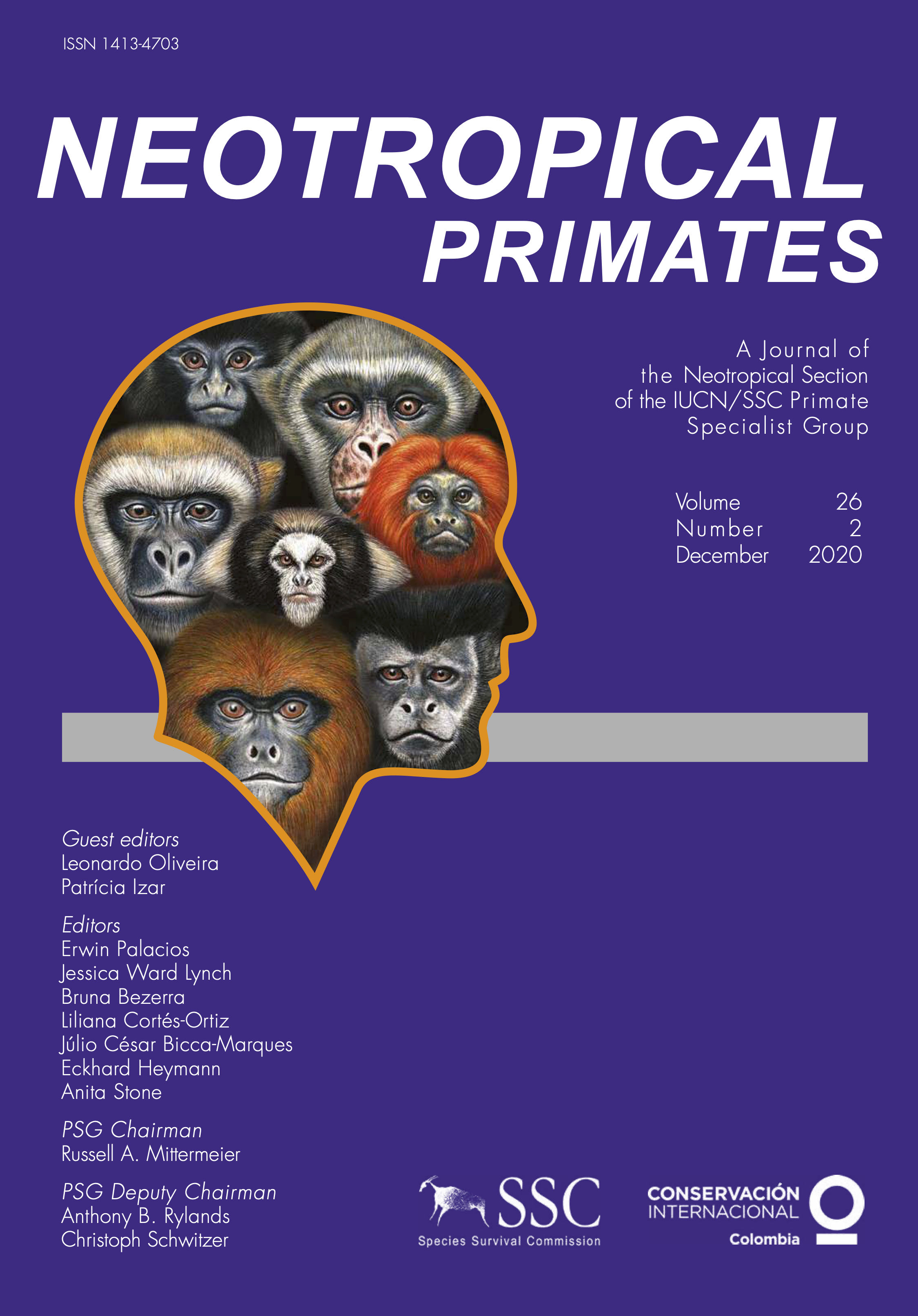Por que os bugios ruivos se coçam?
DOI:
https://doi.org/10.62015/np.2020.v26.46Keywords:
Hair color, epidermal secretion, Alouatta guariba, behavior, stressAbstract
The aim of this study was to evaluate self-scratching behavior in southern brown howler monkeys (Alouatta guariba clamitans) kept under human care at CEPESBI / Projeto Bugio / FURB and to identify the events that precede and the behaviors that follow self-scratching, to verify its functions. For this purpose, 26 animals were evaluated, divided into four groups according to the sex and age of the animals: adult males, adult females, juvenile females and juvenile males. Behaviors were recorded using the method of all occurrences. Seven sample observations were made for each animal. 364 sample hours were obtained with 300 minutes and 3,042 instances of self-scratching. Adult howler monkeys were observed to self-scratch more than juveniles. Noises outside the enclosure were the main events that preceded the self- scratching. Adult animals used their hands to scratch more than their feet or tail. This preference was not observed in juveniles. All animals direct their gaze far away during self-scratching, a behavior that was more evident in adult females when an event outside the enclosure preceded the act of self-scratching. All of these findings suggest that self-scratching can indicate that the animal is under stress or on alert. It was also observed that after self-scratching, howler monkeys were most often resting or in locomotion. We have not been able to determine whether self-scratching may indicate an imminent change in behavior, as has already been shown in other primates, because we didn’t register all the behaviors that preceded self-scratching. The head was the body part most scratched by all animals, followed by the hind limbs and the back. The head, which includes the face, skull and hyoid bone, and the back are the regions with the largest number of glands producing pigment in adult males and intermediate pigment producing glands in females and juveniles. Thus, self-scratching can facilitate the spread of the colored secretion released by these glands to color the animals’ orange hair. This work demonstrated that, as in other primates, self-scratching behavior is indicative of anxiety and/or stress in brown howler monkeys kept under human care. In addition, as demonstrated in several studies, this behavior can have multiple triggers, such as danger, uncertainty, imminent behavior changes and also facilitation of the spread of colored/odorant secretion through the animal’s skin. For a better understanding of the behavior of self-scratching in brown howler monkeys, complementary studies are necessary.

Downloads
Published
Issue
Section
License
Copyright (c) 2020 Sheila Regina Schmidt Francisco, Aline Naissa Dada, Camila de Jesus Pereira, Zelinda Maria Braga Hirano

This work is licensed under a Creative Commons Attribution-NonCommercial-ShareAlike 4.0 International License.


